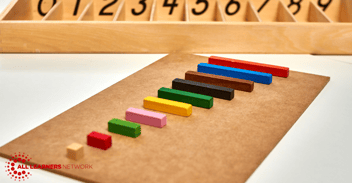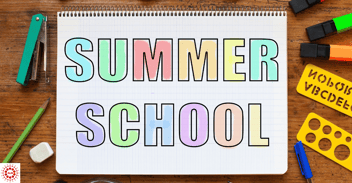
How do we encourage playful, productive struggle in Math Menu?
Our goal in Math Menu is for students to feel both relaxed and curious. Let’s use a recess analogy to help visualize our menu practice. At recess, students are independent and engaged in an activity of their choosing. They are motivated, playful and happy. Some students are working hard at various games and challenges all across the playground space. Others are focused on independent play and exploration. Some students are working to master a particular skill or apparatus. Most students are relaxed during recess. Their curiosity, interest, and preferences drive their choices.
Math Menu is the recess to our balanced math block. It is a time where we expect students to be engaged independently (not teacher-directed) with a math activity of their choosing from their menu. For some students, they will engage in multiple offerings on the menu. Some may engage in just one of the components on the menu. Some students may return to the same offering on the menu over and over again across several days. Math Menu solves the classroom problem of what students can do when they finish activities more quickly than others. It also responds to students’ individual needs by allowing students to work at their own pace.
Math Menu is not math centers or math stations, for some important reasons. We want students to be engaged in play and exploration during menu time. But unlike many center models, we are not just packaging a bunch of random, fun activities for students to play with. The offerings we select as choices for students’ menus have a purpose that is supporting a key instructional goal for some or all of the students. We use the HLC MAPs and Progressions to help us focus our goals.
On student menus, there are many different activities, each in response to different needs’ that have surfaced on a formative assessment. Not all students will engage in or complete all the different activities on the Math Menu. This is also much different than a math station model that offers different activities at each station, but all students are expected to eventually complete all the activities. Students are not expected to complete an entire menu of offerings. Students are expected to choose offerings that will impact their growth and learning in math.
Our goal is to inspire playful, productive struggle with important math concepts during Math Menu time. At real recess, students are given independence and choice in how they move and grow their physical and social bodies. So we strive to honor the same type of independence and choice in our menu packages for how students grow their math mindsets.
Allowing your Math Menu time to be primarily driven by concept work and skills related to the High Leverage Concepts helps encourage playful, productive struggle. When we give ourselves as educators permission to help students dive deeply into important math concepts, we allow more students to make important lasting connections about numbers and operations. At ALN, we believe that all students should be given the time and space to make meaning for themselves through the High Leverage Concept (HLC) Learning Progressions. Educators can use Math Menu time to make this possible for every student.
It is important to use small group instruction and conferences to highlight to students’ the growth they are making in their understanding of the High Leverage Concepts as a result of their hard work. We encourage students to make generalizations and test them out. We let their repetitive play and practice with the HLCs during Menu help deepen their conceptual understanding across time. When students know that their hard work and choices are resulting in growth, they are more willing to engage in the kinds of productive struggles and challenges that will lead to more growth.
Math Menu is also the opportunity for educators to have mindset conversations with their students. Math Menu should feel like a safe space for all students to apply their growth mindset. Many students bring a fixed mindset about math abilities to our classrooms. Students with fixed mindsets about their math abilities seek ways to disengage from challenge or struggle, resulting in a lack of growth. It is often in the playfulness of Math Menu time, when students can be relaxed and curious about math, that students begin to see the impact of their hard work and struggle. Then they are more likely to engage in more and more playful, productive struggle during Math Menu.




